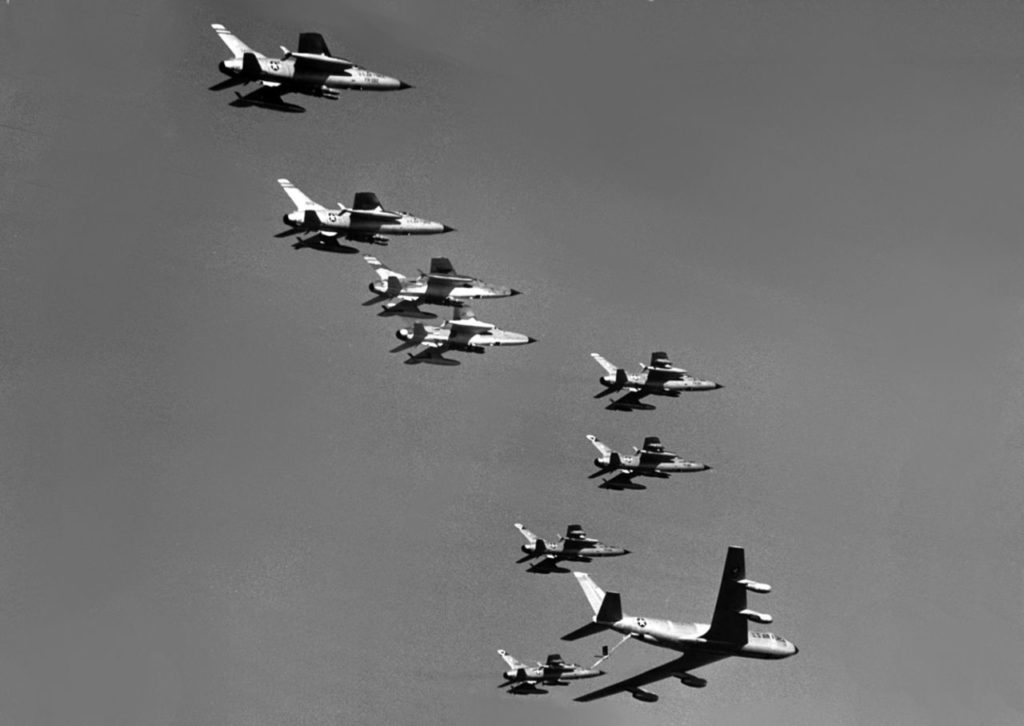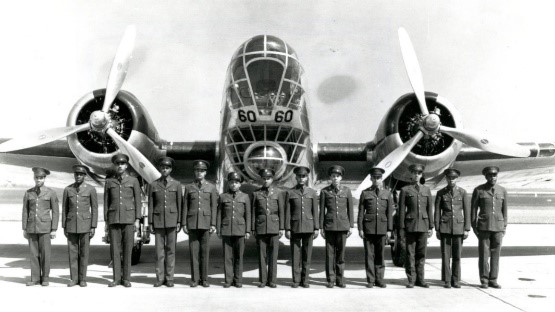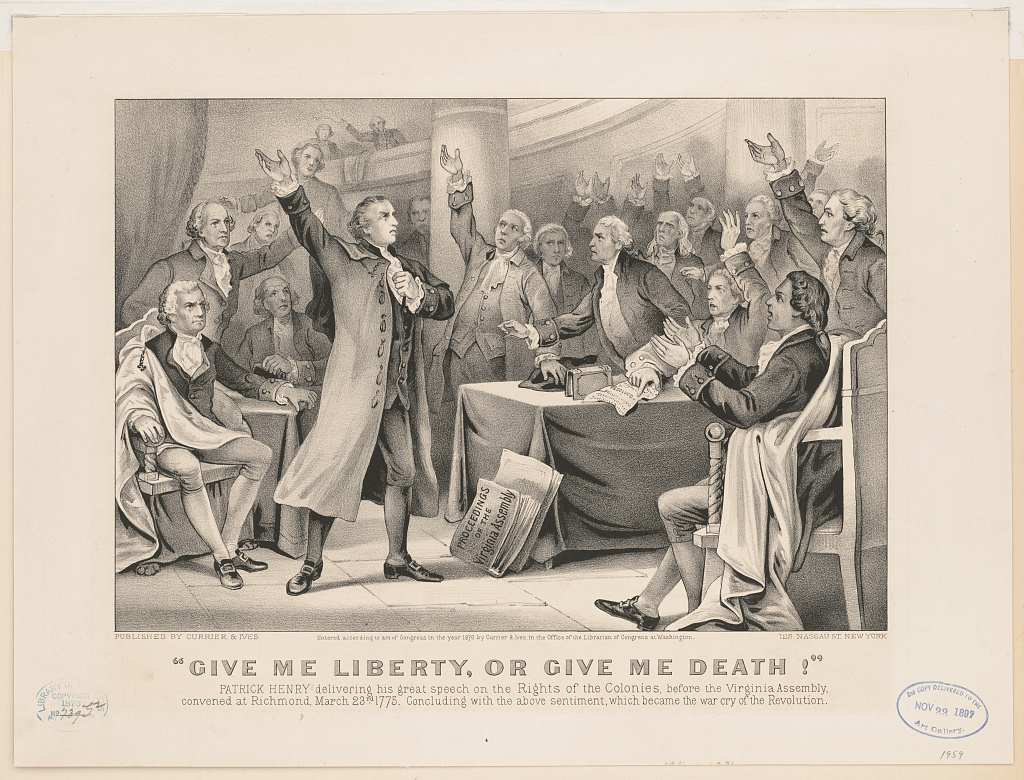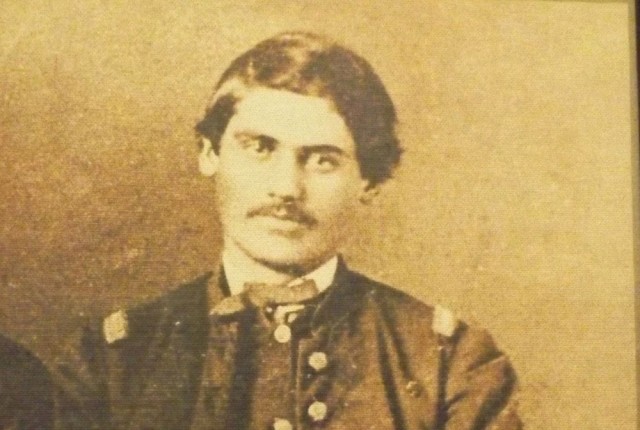
Courtesy of the Peace Corps.
MARCH 1, 1961
Peace Corps is established
President John F. Kennedy issues an executive order establishing the Peace Corps. The Peace Corps program was created during the Cold War in response to the Soviet Union’s commitment of hundreds of men and women to the service of world communism. In opposition, Kennedy wanted to involve Americans in the cause of global democracy, peace, development and freedom. Kennedy’s brother-in-law, R. Sargent Shriver, was directed to lead the Peace Corps. It was subsequently established on March 1, 1961, by executive order. The first countries to participate were Tanganyika (present-day Tanzania) and Ghana.

MARCH 2, 1965
Operation Rolling Thunder begins during the Vietnam War
Operation Rolling Thunder, a gradual and sustained aerial bombardment campaign, begins during the Vietnam War. On March 2, 1965, the U.S. 2nd Air Division and Republic of Vietnam Air Force began an intense air/ground battle against North Vietnam. The goal of this massive bombardment was to put military pressure on North Vietnam’s communist leaders and reduce their capacity to wage war against South Vietnam. Operation Rolling Thunder was the first sustained American assault on North Vietnam and is considered a major expansion of U.S. involvement in the Vietnam War.

MARCH 3, 1865
Congress approves the establishment of the National Home for Disabled Volunteer Soldiers
Congress approves legislation establishing the National Home for Disabled Volunteer Soldiers. The injured who returned home from the Civil War needed long term care, often more than their families could provide. These men were not eligible for care in the homes serving career military officers. Legislation for the creation of the National Asylum of Disabled Volunteer Soldiers was introduced in Congress on February 28, 1865. Both Houses of Congress quickly passed the legislation, with President Lincoln signing the bill on March 3, 1865. In 1873, the name was changed to the National Home of Disabled Volunteer Soldiers. It was one of three predecessors to the Veterans Administration.

MARCH 5, 1770
Colonists and British soldiers clash at the Boston Massacre
A protest by colonists against taxation without representation by the British parliament leads to the Boston Massacre. On March 5, 1770, Private Hugh White was guarding the King’s money stored inside the Custom House on King Street. Colonial protesters who called themselves Patriots began taunting British soldiers. White fought back and struck a colonist with his bayonet. In retaliation, colonists began to throw snowballs, ice and stones. Violence escalated, and shots were fired. Crispus Attucks, a symbol of Black American patriotism and sacrifice, was the first person killed in the fight for American Independence.

MARCH 6, 1836
The Battle of the Alamo comes to an end
The Battle of the Alamo ends. The Battle of the Alamo, a pivotal moment during Texas’ war for independence lasted 13 days, from February 23 to March 6, 1836. The Texians leader, Lt. Colonel William B. Travis, had repeatedly written to his superiors for reinforcements and additional supplies. He was denied each time because filling his request would have been an act of war by the United States, which had a peace treaty with Mexico. In an act of bravery and heroic defiance, Travis wrote a letter titled, “Victory or Death,” wherein he asked one final time for any brave soul willing to aid his cause and help defend the mission. Unfortunately, this letter produced no additional aid, and he was killed on the final day of battle. His sacrifice along with those who fought with him gave rise to a rally cry demanding that America support the Texas independence movement which culminated in Texas becoming our 28th state in 1845.

MARCH 12, 1947
“Truman Doctrine” is presented to Congress
President Harry S. Truman addresses Congress with the “Truman Doctrine.” President Truman appeared before a joint session of Congress to discuss the growing tensions of American Allies. Congress ultimately approved $400 million in military and economic aid to Greece and Turkey. Historians claim that this is the official start of the Cold War and Truman’s speech, also known as the Truman Doctrine, became the foundation of American foreign policy and eventually led to the creation of the North Atlantic Treaty Organization (NATO).

MARCH 13
K9 Veterans Day
K9 Veterans Day honors military and working dogs. Even before a training program was established to train dogs for work in battle, they were serving as soldiers’ companions and protectors. During the Civil War, two dogs named Jack and Sallie, served alongside their fellow soldiers and helped raise their regiment’s morale. While many dogs served during World War I, it was not until March 13, 1942, that the Dogs for Defense program was established to train dogs to serve. With the U.S. entering World War II, Dogs for Defense called upon citizens to donate their beloved pets to be trained for battle. During the war, a mixed breed dog named Chips earned both the Purple Heart and Silver Star for saving countless U.S. soldiers’ lives on the battlefield.

MARCH 15, 1919
The American Legion celebrates its 103rd Birthday
The American Legion celebrates 103 years. Formed on March 15, 1919, in Paris, France, by a thousand officers and men of the American Expeditionary Forces, the American Legion was chartered on September 16, 1919, by the United States Congress. Today, it’s the nation’s largest wartime Veterans service organization, committed to mentoring youth and sponsorship of programs in our communities, advocating patriotism and honor, promoting strong national security and continued devotion to our fellow service members and Veterans.

99th Pursuit Squadron, Tuskegee Airmen. Recruits of the 99th Pursuit Squadron, new-all-colored Air Corps Unit. L-R: Charles Settles, A. Crawford, James Mason, W. Herman, W. Warner, L. Young, J. Nelson, C. Chisholm, James Jackson, Norris Connally, Charles Cromchaw, Hiram Little, and John Moore.
MARCH 19, 1941
The 99th Pursuit Squadron is activated
The 99th Pursuit Squadron (which would become the Tuskegee Airmen) is activated. The U.S. War Department established the 99th Pursuit Squadron along with a few other squadrons who would become the Tuskegee Airmen, America’s first Black military pilots. The 99th Pursuit Squadron was the first to deploy overseas to North Africa, Sicily and parts of Italy.

MARCH 19, 2003
President George W. Bush initiates war against Iraq
U.S. President George W. Bush, along with coalition forces initiated war against Iraq. President Bush announced in a televised address, “At this hour, American and coalition forces are in the early stages of military operations to disarm Iraq, to free its people and to defend the world from grave danger.” The government believed that Saddam Hussein possessed or was in the process of building weapons of mass destruction.

MARCH 21
Rosie the Riveter Day
Rosie the Riveter Day celebrates World War II icons. Rosie the Riveter was a cultural icon of World War II, representing the women who worked in factories and shipyards, many of whom produced munitions and war supplies. These women sometimes took entirely new jobs replacing male workers who joined the military. “Rosies” represented American feminism and showcased the impact women had in the workforce. We honor all of the brave, powerful and inspiring women who faced challenges and pushed forward!

MARCH 23, 1775
“Give me liberty, or give me death!” speech is given by Patrick Henry
Patrick Henry delivers, “Give me liberty, or give me death!” speech to the Second Virginia Convention (including Thomas Jefferson and George Washington) at St. John’s Church in Richmond. Henry is credited with convincing the convention to pass a resolution delivering Virginia troops for the Revolutionary War. A gifted orator and major figure during the American Revolution, his rousing speeches fired up America’s fight for independence. Henry became governor of Virginia in 1776 and also influenced creation of the Bill of Rights.

MARCH 25
National Medal of Honor Day
National Medal of Honor Day honors our nation’s 3,530 Medal of Honor recipients. The Medal of Honor was created during the Civil War and is the highest military decoration presented by the United States government to a member of its armed forces who has distinguished themselves through acts of valor. Since 1941, more than half of the medals have been awarded posthumously. The first Army Medal of Honor was awarded to Private Jacob Parrott during the Civil War for his role in the Great Locomotive Chase. The only woman to receive the Medal of Honor, Dr. Mary Edwards Walker, served as a surgeon during the Civil War.

MARCH 26, 1945
World War II Battle of Iwo Jima is won by American forces
The World War II Battle of Iwo Jima is won after heavy fighting and casualties. Iwo Jima was considered strategically important as an air base for Japanese fighter planes to intercept U.S. long-range B-29 Superfortress bombers. The U.S. Marine Corps and U.S. Navy landed on and eventually captured the island of Iwo Jima from the Imperial Japanese Army. The invasion, designated Operation Detachment, had the goal of capturing the entire island, including the three Japanese-controlled airfields (including the South Field and the Central Field), to provide a staging area for attacks on the Japanese main islands. This five-week battle comprised some of the fiercest and bloodiest fighting of the Pacific and cost U.S. forces 6,871 killed and 19,217 wounded. Medals of Honor were awarded to 22 Marines and five Sailors, 14 of them posthumously. In the words of Admiral Chester W. Nimitz, “Uncommon valor was a common virtue.”

MARCH 27, 1794
Congress passes the Naval Act of 1794
U.S. Congress passes the Naval Act of 1794 establishing a national navy. After suffering significant loss of goods and personnel to the Barbary pirates, Congress passed legislation allowing the construction of six heavy frigates, the first ships of the U.S. Navy.

MARCH 28, 2017
National Vietnam War Veterans Day is established
National Vietnam War Veterans Day is established with the Recognition Act of 2017. March 29 was selected as National Vietnam War Veterans Day because on March 29, 1973, Military Assistance Command, Vietnam, was disbanded, and the last U.S. combat troops departed the Republic of Vietnam. Please join us for a Welcome Home Ceremony on March 29 as we commemorate the five-year anniversary honoring more than six million Veterans of the Vietnam War.

Tuskegee Airman – Capt. Andrew D. Turner, who in a few minutes will be escorting heavy bombers en route to enemy targets, signals to the chief of this ground crew before taking off from a base in Italy. He is a member of the 15th US Army Air Force, which has been smashing enemy objectives in Germany and the Balkans with both fighter and bomber aircraft. The pilot’s plane, a Mustang, is named for a type of wild horse that once roamed America. September 1944.
MARCH 29
Ohio celebrates Tuskegee Airmen Day
Tuskegee Airmen Day is celebrated. In Ohio, March 29 marks a special day to honor our nation’s first African American military aviators. Their story is one of a “Double Victory” against fascism overseas and racism at home. During World War II, the Tuskegee Airmen proved their skill and courage by earning one of lowest loss records of all escort fighter groups and paved the way to integrating the U.S. Armed Forces.



